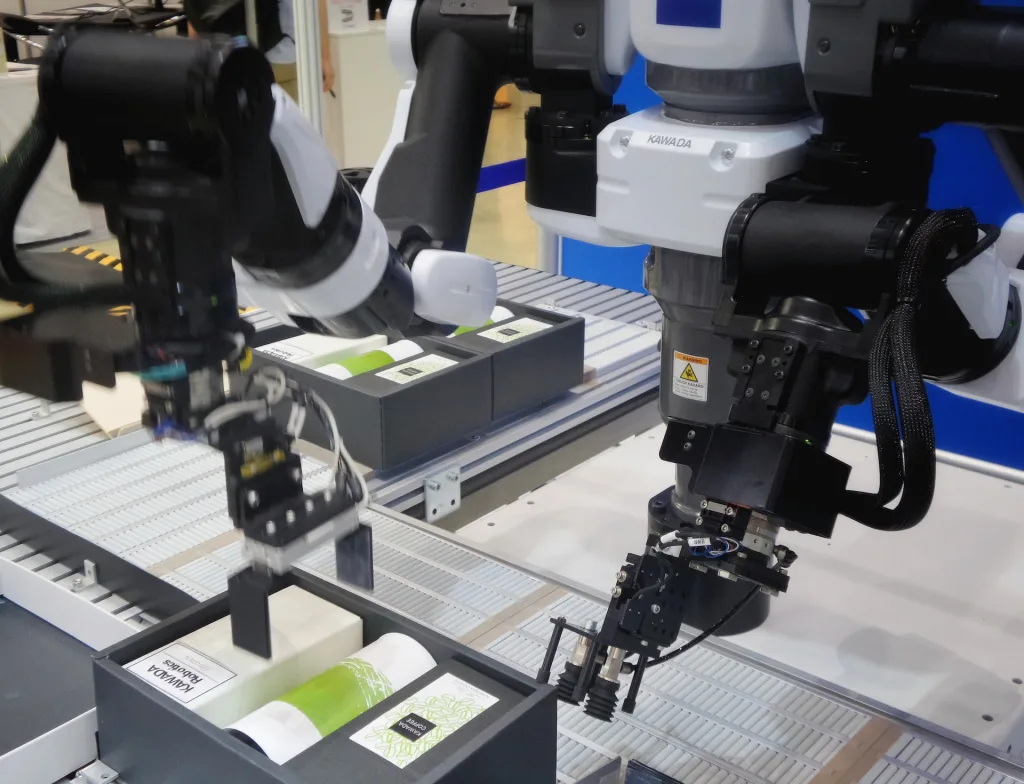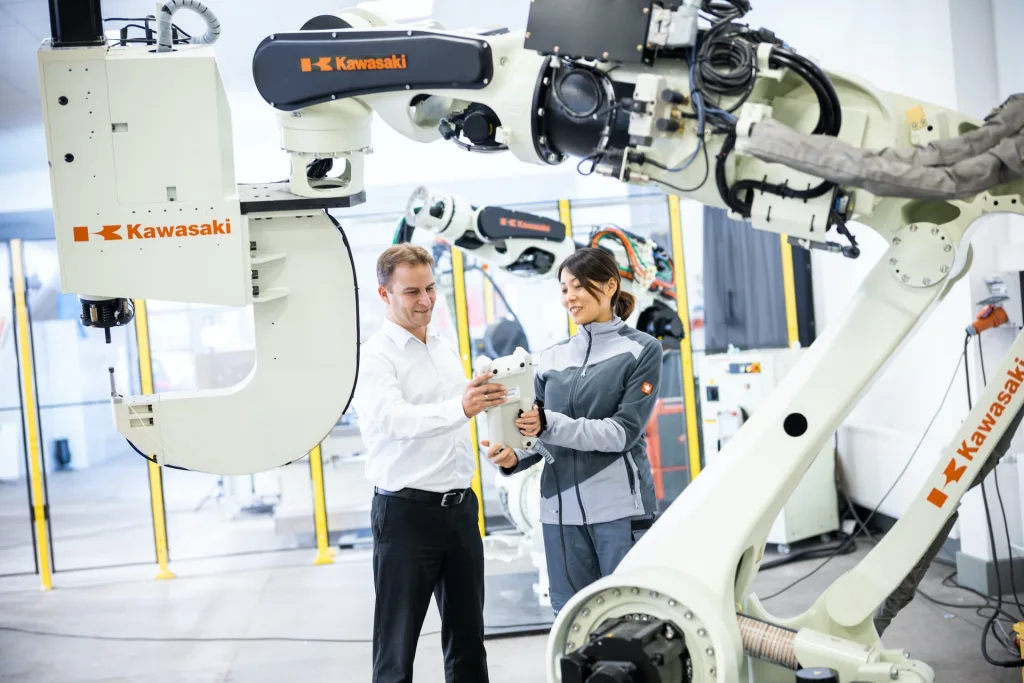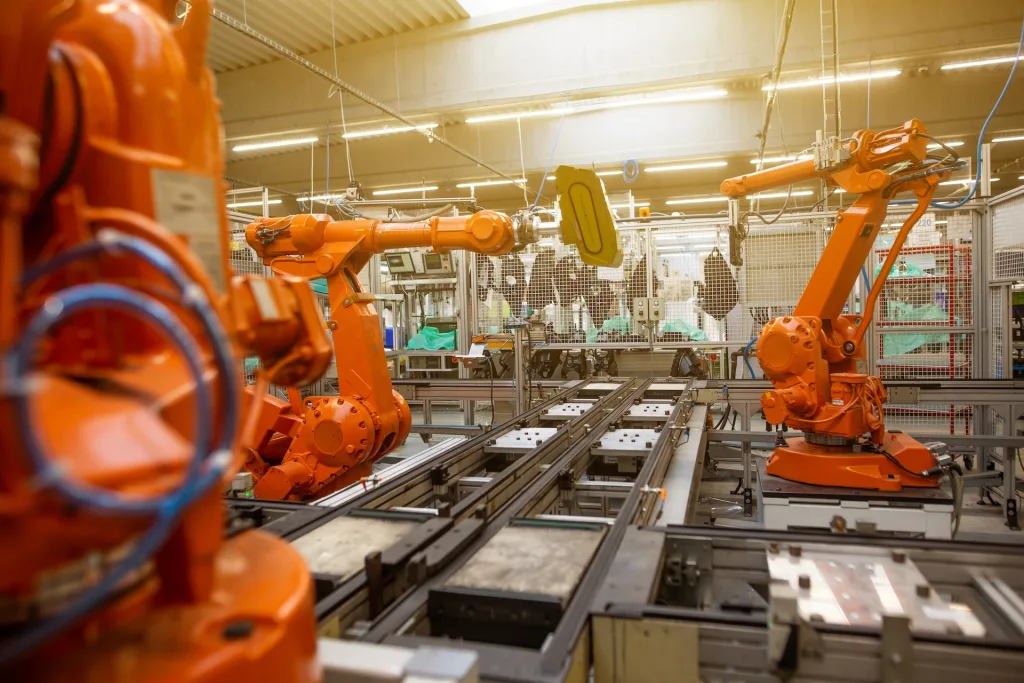Robotic Process Automation is a runaway train. According to Deloitte, the technology will achieve near-universal adoption by 2025. However, just because RPA is dominating the business world, that doesn’t mean it will stop evolving.
We are standing at an exciting technological juncture. Advances in AI in recent years have been startling. ChatGPT and other forms of Generative AI have captured the public consciousness. However, that exciting technology is but one expression of the potential of AI.
RPA is a straightforward yet effective tool. However, the convergence of RPA and AI provides endless opportunities for innovation. Conversational AI-powered customer service, analytics-driven decision-making, and the automation of knowledge work are just some examples of AI in RPA.
As technology advances, Cognitive Robotic Process Automation will change the nature of work in ways that we can scarcely imagine. Let’s explore how AI with RPA has already pushed the boundaries of automation before considering its future impact.
The limits of RPA

The widespread adoption of RPA is a testament to its utility. The technology has helped countless businesses achieve new levels of production, efficiency, and accuracy by automating once manual tasks. However, like any technology, it has upper bounds.
1. Transactional automation is difficult to manage
While RPA bots will faithfully grind away at processes, they need a bit of management and maintenance. For example, when inputs or outputs change, bots must be reconfigured to handle these slightly shifting conditions. In dynamic work environments, this can drain resources and time.
2. RPA struggles with unstructured data
RPA tools are built to execute tasks using if/then/else logic. As such, they rely on predictable data structures. Any variation or change with the input data will cause errors or exceptions because they are outside the defined values the bot is expecting to receive.
3. RPA presents scaling challenges
Partly due to the reasons we’ve listed above, scaling your RPA processes can be difficult. Each process must be clearly defined, managed, and maintained, while RPA’s lack of adaptability can also pose issues.
The limitations of RPA are not something to get worried about. AI-assisted RPA can overcome each of these limitations while opening up new and exciting automation possibilities.
Here is how RPA with AI has changed automation.
Robotic Process Automation and Artificial Intelligence:
A perfect match
RPA, by design, is a straightforward and uncomplicated tool, at least at the user level. It’s built to be accessible to non-technical teams. As such, it carries out the instructions it is given in a controlled manner. It’s down to humans to identify these processes and direct RPA to execute commands.
Of course, detailing step-by-step instructions can become impossible, given sufficient complexity — which is why combining RPA and Artificial Intelligence is the future of automation.
1. RPA with Optical Character Recognition
In Robotic Process Automation with AI and OCR to Improve Business Process (Shidaganti, 2021), the author outlines the limitations of RPA, suggesting, “Any changes in the automated process require direct changes in the RPA application.” Shidaganti proposes AI as the solution to this process and makes an argument for Optical Character Recognition (OCR) as a fundamental augmentation of RPA.
Indeed, OCR has impacted businesses by opening up RPA to unstructured data. AI-powered RPA OCR tools can read information from printed documents and even written text. There are three primary opportunities for RPA that OCR integration facilitates.
- OCR codes structured data, allowing RPA to work with unpredictable inputs
- RPA can automate remote machines by deciphering what is happening on their respective screens
- OCR, in conjunction with Machine Learning, can help with Know Your Customer (KYC), Anti Money Laundering (AML), and Fraud Detection by scanning documents. The learnings and decisions of the tech can integrate with RPA, allowing for quicker account opening, onboarding, loan decisions, and so on.
2. Machine Learning and RPA
Robotic Process Automation and Machine Learning are another example of utilizing AI to overcome the inherent limitations of RPA. As far back as 2016, automation experts in the insurance industry had identified the possibilities of cognitive robotic process automation (RPA). In that paper, the authors discuss “self-optimizing customer service, loan pricing, financial advice, or claims or complaint handling” as possible horizons.
In what must serve as a mark of progress, it’s interesting to see how Robotic Process Automation Machine Learning tools have become common in just a short space of time.
Machine Learning is everywhere. It describes the process of teaching a machine to execute tasks with explicit programming instructions. As you might know, this involves machines using algorithms to analyze and find patterns within a data set. Once trained, the machine can process other data and produce insights and predictions.
RPA and Machine Learning are a great match because it means RPA becomes smarter, more intuitive, and capable of dealing with unstructured data.
3. RPA with Deep Learning
Machine Learning is a subset of AI, while Deep Learning is a subset of Machine Learning. The difference between Deep Learning and Machine Learning is perhaps subtle to some people, but it’s worth exploring. Machine learning is trained on data to help with decisions and predictions.
However, the technology typically lacks the ability to improve on its own over time. In contrast, Deep Learning involves the use of neural networks to learn and improve its performance. In other words, thanks to Deep Learning, RPA and ML combine to build automations that get better through experience.
Of course, Deep Learning requires an incredible amount of data to perform this function. In what is another example of the deep symbiosis between AI and RPA, bots are ideal for helping with the laborious process of collecting this training data. RPA tools can access various websites and other information repositories to gather this information, ensuring the Deep Learning algorithm has plenty of data to improve.
Deep learning also enables bots to exploit the upsides of predictive analytics. When RPA runs into exceptions, it can match them against expected or unexpected patterns, eliminating reliance on human intervention.
When smart bots can make data-driven decisions, they can respond to customers in optimal ways. An example of these applications within RPA includes sentiment analysis tools that use natural language processing (NLP) to decode the moods of consumers. In turn, bots can modulate their response to strike a suitable note. This dynamism can do a lot to overcome the gaps between empathetic human customer service and its mechanized alternative.
4. RPA and Image Recognition
Pairing RPA with image recognition software is another example of using AI to overcome RPA’s inability to deal with messy or unstructured data. In the paper Analysis and applicability of artificial intelligence technologies in the field of RPA software robots for automating business processes (Kanakov, 2022), the author outlines some fascinating uses of RPA and Image Recognition in relation to automating hiring background checks or assisting with fraud detection.
Other use cases proposed by Kanakov include using facial recognition for building security, with RPA tools connected to cameras. The applications are truly endless. For example, drones or cameras could scan any number of environments for anomalies. Once detected, an RPA system could report the problems to relevant parties, ensuring swift remediation.
5. RPA with Generative AI
In an article in Forbes, DELL’s Clint Boulton uses a fantastic analogy when comparing RPA and Generative AI. He suggests that “At a gala event, RPA is checking the guest list, counting tickets and monitoring things like room capacity, heating and lighting.” Then, he states, “Meanwhile, Generative AI is creating advertising for the event, writing congratulatory speeches for honorees and having conversations with every guest.”
What is so powerful about this analogy is that it perfectly captures something we’ve all observed in the last year or so. Generative AI is so interesting and powerful that we can’t help but marvel at its output. However, without someone (RPA) toiling away in the background performing menial tasks, there can be no event or at least not a functional one.
Per Gartner, Generative AI offers lots of options. It can quickly generate written content, images, videos, music, and even code. Some of the possibilities are immediately obvious, such as conversational customer service.
But enhanced chatbots are just the start; other use cases for RPA and Generative AI include helping RPA understand unstructured data of many forms and even augmenting RPA with decision-making, data analysis, and more.
6. Attended Automation
You can split automation into two categories: Attended and Unattended. As you might expect, Unattended Automation means the bot executes processes without any human input. In contrast, Attended Automation describes tasks that require human interaction during, at minimum, one step along the way.
There are a few ways this can work. For example, the automated process might require a manual trigger. Alternatively, one of the steps may need security credentials during the process. However, more complex orchestrations are possible here thanks to Robotic Desktop Automation (RDA).
Robotic Desktop Automation (RDA) is a form of Attended Automation. However, thanks to AI tools like ML and Optical Character Recognition, these robots dynamically stitch together multiple workflow processes, constantly automating various tasks for an individual user. In this scenario, the RDA bot acts like a virtual assistant, retrieving data, sending files, and generating reports while the human operative speaks to a customer.
7. Self-healing bots
A State of RPA survey from 2022 revealed an issue that affects some businesses that adopt RPA solutions. Over 69% of respondents suggest that they experience a broken RPA bot each week. Worse still, over 40% suggested it takes more than 5 hours to fix their bot, with other respondents suggesting remediation can take more than a day.
These figures are unacceptably high. However, the survey doesn’t get into the specifics of the problem. Common reasons for RPA failure include input changes, robots running into exceptions, incomplete data, poor testing, or a lack of maintenance, to name a few.
Self-healing RPA describes a system that can fix itself without the input of a human worker.
Self-healing RPA bots are made possible through AI algorithms that monitor the performance of the automated task. When problems arise, these helpful tools spring into action, identify the root cause and apply a fix. The upside is increased performance and more uptime.
8. Smart processing mining
Process mining in the context of RPA involves the discovery of tasks that businesses can automate. By using the advanced analytic capabilities of AI, teams can mine their business workflows to find tasks that can be automated and make forecasts about the impact of this automation.
Process mining uses ML and data analytics. For example, it uses screen recording software to capture workflow data, breaking it down into steps. Then, ML or analytics tools run models of these tasks and find areas that can be turned into automated processes. AI tools give businesses a better oversight and understanding of the tasks, allowing them to identify dependencies, bottlenecks, and inefficiencies.
Pairing RPA and process mining together is very powerful because it can help businesses unearth processes that they might not otherwise detect. That means you can get more value from your RPA investments and further compound the other benefits of RPA, like reducing costs and boosting productivity.
The other thing you might notice here is that process mining can cut discovery time for appropriate RPA processes. That means your implementation gets off the ground much quicker.
9. Software testing automation
Software developers and publishers have delivered some of the most disruptive technology we have over the last few decades. However, their industry itself has also gone through something of a revolution. DevOps and Agile methodologies have helped developers meet the demand for lightning-quick, continuously improving products, while CI/CD pipelines also contribute to quicker times to market.
RPA is a fantastic tool for specific types of software testing. McKinsey suggests that next-generation software development is just behind AI in terms of the biggest technological trends for 2023. Software testing automation, powered by both RPA and AI, will be at the forefront of that trend, with Generative AI writing code and nontechnical teams being welcomed to the fold thanks to no-code tools.
As the consultancy firm’s partner, Santiago Comella-Dorda, suggests, “Developers are perhaps one of the most valuable assets for the modern digital enterprise, yet they spend well over 40 percent of their time on repetitive, low-value tasks that could be easily automated with a modern tool set.”
10. RPA Intelligent Automation
Artificial Intelligence Robotic Process Automation, also called Intelligent Process Automation (IPA), is considered to be the next stage of automation. It takes RPA and adds cognitive abilities through AI. It can encompass RPA with all or some of the other AI technologies listed above.
In an IBM survey of C-Suite executives, 90% of respondents suggested that Intelligent Automation helped them perform “above average in managing organizational change in response to emerging business trends.” This sentiment speaks to RPA and AI’s ability to create agile and robust solutions that can offer a genuine competitive advantage.
Evidence of RPA and AI’s power to bring about organizational change can be found in the business community’s response to the COVID-19 pandemic. The Adoption of Robotic Process Automation Technology to Ensure Business Processes during the COVID-19 Pandemic (Siderska, 2021) showed how 60% of Polish businesses studied were able to implement business continuity thanks to RPA tools. Per the study, AI and Analytics were major contributors.
In a recent Gartner survey, a full 80% of executives revealed their belief that automation can be applied to any business process. That statistic is a remarkable testament to the power of RPA when used with AI. It’s impossible to imagine that number could be so high without the augmentation of RPA by AI.
As for the future, research into neuromorphic processing — an information processing system that is based on brain structure — could lead to greater cognition and machine intelligence. What’s so exciting about this horizon is that these intelligence models require far less training data, meaning they could be available to enterprises.
How AI-powered RPA will change the future
of work and society
AI process automation tools are just getting warmed up. Here are some areas where AI will further impact automation.
1. Industry 4.0
The first Industrial Revolution was powered by steam, the Second by electricity. The Third Industrial Revolution was enabled by digital technologies during the 1970s. When it comes to the Fourth Industrial Revolution, also known as Industry 4.0, there are several technological candidates, such as Digital Twins, Virtual Reality, the Internet of Things (IoT), AI and ML, and even 3D printing.
However, an IMD Global Supply Chain Survey from 2022 reveals a worrying truth. Of the more than 200 manufacturing executives interviewed, very few listed Industry 4.0-related technology as a big priority. This is a far cry from 2019 when 68% of respondents to a McKinsey survey suggested Industry 4.0 was a top strategic priority.
In the research paper Robotic Process Automation and Artificial Intelligence in Industry 4.0 – A Literature review (Riberio, 2021), the author states that “given the scope of the applicability of AI, RPA has gradually been adding, to its automation features, implementations of algorithms or AI techniques applied in certain contexts (e.g., Enterprise Resource Planning, Accounting, Human Resources) to classify, recognize, categorize, etc.”
As the tech continues to evolve, new tools and possibilities will help Industry 4.0 become an AI-powered reality.
2. Hyperautomation
Hyperautomation is the natural evolution of automation. However, instead of the automation of a particular task or business process, it seeks to expand automation capabilities across the entire organization. The final version will be a fully connected and largely autonomous business where workflows and decisions will be streamlined, agile, and resilient.
Hyperautomation involves a mix of several technologies. This includes:
- RPA
- AI
- Business Process Automation (BPA)
- ML
- Intelligent document processing (IDP)
- Workflow orchestration
- Process mining
- Natural language processing (NLP)
- Digital Twin of an Organization (DTO)
- Conversational RPA
- Computer vision RPA
As posited in the paper Hyperautomation for the enhancement of automation in industries (Haleem, 2021), “Through a mixture of automation technologies, hyperautomation can overcome some constraints of a single automation device method. This allows companies to transcend beyond the limits of each process and automate almost any arduous and scalable operation.”
3. Less reliance on experts
The boom in software development in recent years has exposed a problem. While the demand for apps and mobile technology grew, supply struggled to keep up. Software developers were in short supply, meaning many positions sat unfilled for months on end.
With prestigious, six-figure jobs lying in wait for qualified candidates, you could be forgiven for thinking that people would simply retrain and reap the rewards. Schools and universities also came under scrutiny, with governments suggesting they weren’t doing enough to encourage STEM subject uptake. However, the reality is that coding is hard. Only a small section of the population has an aptitude for the job.
As our world becomes increasingly digital, the coder shortage might well become regarded as a warning that we failed to heed. Thankfully, AI-powered automation can provide the antidote to this problem.
Leadership positions require a mix of management skills and deep subject matter knowledge. Reading and learning are just one part of what makes executives and senior team members valuable to an organization. However, as more industries embrace technology, this talent pool will be drained.
AI analytics can use vast amounts of historical data to find insights and underlying relations and make predictions. These tools will help bridge the experience gap. It may also serve to democratize the shrewd decision-making that was previously the preserve of businesses with huge budgets.
While experienced decision-makers and strategists will never be out of fashion, a hyper-automated business driven by Machine Learning (ML) and data analytics will run around the clock, making choices based on factors that no human could consciously consider.
McKinsey suggests that the automation of knowledge work is now in sight. Law, economics, education, the arts, and technology will all experience disruption that was previously considered only to endanger less skilled jobs. What this means for the general workforce is yet to be determined, however.
4. Greater government efficiency
Government spending is a perennially contentious issue. Across the world, democratic administrations have a reputation for bloat and errant spending. Per research from the renowned Brookings Institute, US government bodies are embracing AI and RPA.
Departments as diverse as the Food and Drug Administration, Social Security, the Defense Logistics Agency, and the Treasury Department have adopted AI and RPA to increase productivity and reduce the costs of their essential services. Furthermore, a survey from the American Council for Technology and the Industry Advisory Council (ACT-IAC) demonstrates use cases from about a dozen government organizations.
A more efficient and cost-effective government could have a transformative effect on society as a whole. Services could become more efficient and effective, and taxes could be funneled into programs that could change the lives of millions. However, this widespread adoption highlights the importance of eliminating bias in AI, particularly if worldwide governments use the technology to drive policy decisions.
Final thoughts
AI has had a profound impact on RPA technology. Early automation tools were capable of handling a lot of the rote and mundane tasks within the workplace. However, as the collective appetite for automation grew, RPA ran up against its limits. AI is knocking down those barriers.
Combining RPA and AI extends the potential of both tools. Businesses are already reaping the rewards of Intelligent Automation, such as improving customer service, increasing organizational efficiency, and reducing operating costs. AI has opened the scope of RPA in ways that seemed unlikely just a decade ago.
However, the Robotic Process Automation and AI story does not stop here. Further gains will come as we move toward the era of hyperautomation. It’s going to be a wild ride, so don’t get left behind.





